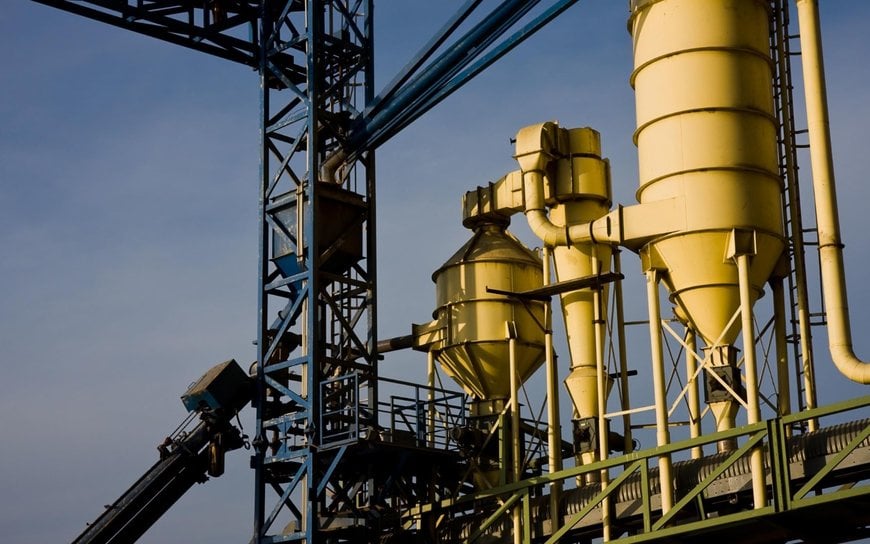www.magazine-industry-usa.com
19
'21
Written on Modified on
Steps for more efficient pumping applications
The development of large-scale projects such as the $23 billion Barakah nuclear power plant in the United Arab Emirates (UAE) and the $563 million Doha south sewage treatment infrastructure in Qatar are expected to continue driving the demand for industrial pumps in the Middle East.

Here Raphael Torrano da Conceição, managing director at industrial motor and drives manufacturer WEG Middle East, explains how key steps can make your pumping applications more efficient.
Driven in part by large infrastructure projects, it is estimated that the Middle East industrial pump market will continue growing at a compound annual growth rate (CAGR) of 2.8 per cent during the next four years. Governments in the Middle East have sought to diversify their economies and reduce their reliance on hydrocarbons. Lower oil prices, along with the economic shock of COVID-19 have made this diversification even more important.
Growth in sectors including healthcare, food and beverage, technology, telecommunications and clean energy will lead to an increase in the deployment of industrial pumps in non-oil sectors across multiple Middle East countries. However, it’s undeniable that the oil and gas industry will continue to be a key market for pump applications. So, as the demand increases, how can industry ensure that their pumping processes are energy efficient?
Avoid oversizing the pump
When choosing a new pump, engineers will always be cautious and include a safety factor plus a little extra just in case. However, selecting a pump that can perform consistently at its optimum efficiency level, can significantly reduce energy usage and maintenance costs. For example, a higher performance of flow and pressure needs greater power from the motor, so an oversized pump can result in unnecessary energy consumption. In addition to its size, speed, power requirements, drive type, the mechanical seal and ancillary equipment, all need to be considered and selected to suit the application.
But, what are the options if an intervention at the design stage isn’t possible, or if you wish to improve the efficiency of legacy equipment? If a pump is oversized for its application, trimming the impeller is a cost-effective way of reducing the pressure and flow. However, it’s important to note that the impeller should not be trimmed below the minimum diameter shown on the manufacturer’s pump curve. To achieve the required function, this is more energy efficient than using a throttling valve. However, due to the trimming, the clearances between the impeller and the casing widen, making it less efficient than the original. As a result, variable speed drives (VSDs) are often favoured to achieve energy efficiency.
Use a VSD dedicated for pumping systems
One of the main trends that is accelerating in the Middle East market, is the increasing focus on energy efficient equipment. For pumping applications, this growing awareness is influencing the uptake in intelligent pumps. For example, fluid handling can be turbulent, between leakages and low fluid levels, there’s a lot that can go wrong. Pumps, pipeline and fittings can get seriously damaged if pressure or flow are out of control and such occurrences are not tracked early. With an intelligent pump, this can be regulated and controlled before problems arise.
Built-in control, such as the Pump Genius available in WEG VSDs, enables more effective use of motors based on production demands and fluid availability. Dedicated for pumping systems, this intelligent pump control ensures accurate pressure and flow throughout the processing cycle.
While high efficiency pump seals should be used to consume energy from the mechanical friction and prevent leaks, automatic broken pipe detection in WEG’s Pump Genius can identify leakage and adjusts the motor performance accordingly. Additionally, dry pump detection means if the system runs dry, the motor is automatically deactivated, and a dry pump alert is issued. With both cases the Pump Genius allows the motor or motors to reduce consumption of energy.
When multiple pumps operate as part of a parallel pumping system, there are real opportunities for significant energy savings. In such instances, jockey pump control can also optimise the use of different sized motors. It may be that demand requires just a small motor to be in use, or a combination of a small and large motor. Pump Genius gives increased flexibility to use the optimal sized motor for a given flow rate, by switching or adjusting as required.
Pump Genius also has a programme for “deragging” clearing of the pump impeller, allowing for continuous use. This keeps the motor in optimal condition which has positive effects on energy efficiency, helps to minimise downtime and maximise energy savings.
Carry out maintenance
Regular maintenance should be carried out on the entire pump system. Pump performance will naturally decrease after prolonged heavy-duty use or the exposure to harsh conditions. This can be as a result of erosion, corrosion, chemical attack, wear or cavitation. Engineers should firstly opt for products — such as those provided by WEG — that can provide energy efficient operation in the harsh environments that may be encountered in the Middle East, such as high temperatures, humidity and elevated levels of dust and dirt.
As deteriorations in the pump’s efficiency and capacity can occur long before obvious warning signs appear and the pump fails, it’s worth using condition monitoring to monitor any significant changes within the machinery. For example, not detecting rotor erosion early, can be costly and can reduce efficiency too.
In the coming years, the industrial pump market in the Middle East is expected to continue growing, so it’s important that existing and new pump applications consider energy efficiency as a priority to get the most out of their systems.
www.weg.net

